China’s decision to stop taking other people’s rubbish has caused mass disruption
CHINA’S decision to stop recycling the world’s waste is a chance to reset our throwaway culture. Don’t call it garbage, experts say — think of our trash as a resource.
THE machine making all the noise is a trommel. It’s a massive steel cylinder, about 12m long, constantly in motion and which dominates the working area of a recycling plant in Edinburgh, in the northern suburbs of Adelaide.
Every two weeks, the contents of 120,000 yellow top recycling bins gathered from the councils areas of Playford, Salisbury and Gawler, plus a few from regional South Australia, are fed into its maw. That adds up to 30,000 tonnes a year. About half of it is made up of paper and cardboard. The rest is glass, aluminium, metals and plastic.
It’s a lot of rubbish. Although, increasingly that is a term that is frowned upon.
The job of the trommel is to help sort all the material that has been sitting in those yellow-lidded bins. All the paper, all the cardboard, the wine bottles, the milk cartons, the juice containers. And much else that should not be there as well. The constantly spinning trommel is perforated, so the smaller, heavier items, such as glass bottles drop through the bottom and fall into another area to be collected, processed and used again.
The Edinburgh plant is run by the Northern Adelaide Waste Management Authority (NAWMA), which is owned by the three councils, and is a state-of-the-art facility.
Such plants are going to be increasingly needed as the world confronts a massive waste crisis. A recent decision by China to stop acting as the world’s dump and cease accepting waste from across the globe has hastened the need to find a solution.
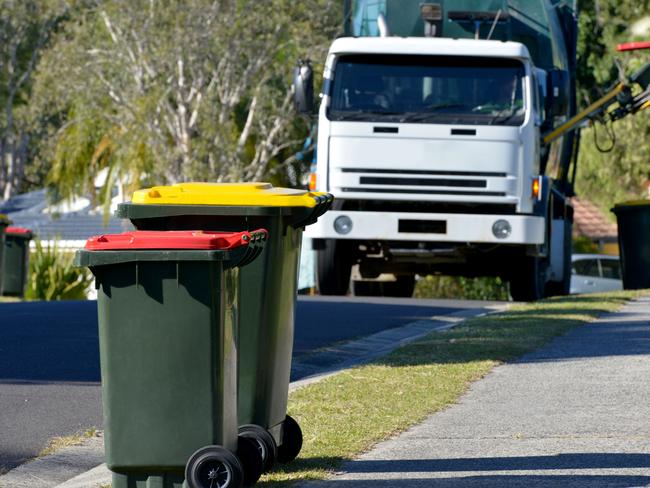
At NAWMA, they saw the Chinese decision coming, so instead of being fearful of the consequences, they have decided to capitalise on it. But they say that process will be easier if the public is more careful about what they put in their recycling bins.
Adam Faulkner is chief executive of NAWMA and he believes China’s decision will provide the impetus for a broader community discussion about recycling, waste and how the system can be improved.
And, importantly, how much households can help by doing simple things like putting the right stuff into the right bins.
“We see this, what some people term as a crisis, as an opportunity to cut through with the public to say this is a really good time to make sure it’s just paper, it’s just plastics, it’s just glass, it’s just aluminium you are putting in the yellow topped bin,” he says.
The public is already picking up the message. Faulkner says NAWMA fields up to 50 phone calls a week asking what items can be recycled. Not too long ago, that number was zero.
The big disruption came in 2017 when China announced its “National Sword” policy, which put a stop to it accepting around 30 million tonnes of global waste a year. Around 1.3 million tonnes of that came from Australia.
That 1.3 million tonnes is only 4 per cent of the nation’s recyclable waste, but included 35 per cent of Australia’s recyclable plastics and 30 per cent of its cardboard and paper.
It’s not that we were completely reliant on China. In SA’s case, prior to the Chinese announcement, about 55 per cent of our recycled paper stayed in the country, the rest went overseas. For plastics, 37 per cent stayed in SA, 40 per cent went interstate and just 23 per cent overseas.
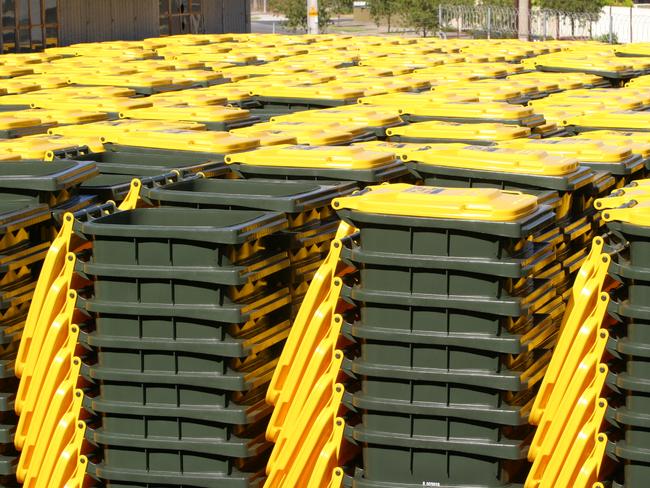
Still, the China decision caused panic among local councils responsible for picking up household bins and the companies that made a living from selling the waste to China.
The price of mixed paper and cardboard fibre dropped from around $120 a tonne to $20 a tonne. Councils across SA say the sudden withdrawal of China will cost them millions and ratepayers may have to pick up the bill.
But China’s decision has also supercharged efforts worldwide to find new ways to deal with what is a rapidly growing global waste problem. To find a way to crack down on the growing menace of plastic pollution which is infiltrating life in Australia and beyond.
Some solutions may appear radical. The Brisbane City Council is banning single-use plastic bottles, straws and helium balloons. The Adelaide City Council is outlawing plastic straws from public events. The European Union is also banning single-use plastic straws and bottles, as well as cotton buds. Britain has made a similar commitment.
In Australia, Woolworths and Coles, which give out 3.2 billion lightweight single-use plastic bags a year, have replaced them with heavier bags costing 15c each, replicating a move mandated in South Australia in 2009. But illustrating the difficulty in changing people’s minds, Coles has backflipped on its commitment in New South Wales, Victoria, Queensland and Western Australia because of a consumer backlash.
Disposable, plastic-lined coffee cups (of which 600 billion end up in landfill each year) are also in the firing line. Starbucks, which did more than anyone in the late 1980s to popularise these cups, is now trying to find a solution. In the UK, Starbucks has added a 5p surcharge on disposable cups and offers a 25p discount to customers who bring reusable cups. It is joining fast food giant McDonald’s to develop a recyclable coffee cup.
New taxes have been discussed to help pay for the clean-up. Pressure is being applied to manufacturers to ensure they are more involved in the collection of their discarded products.
The latest buzz phrase is “circular economy”. This compares to the “linear economy”, where new materials are used in manufacturing, sold to the public then thrown away into landfill.
Helen Millicer, principal of One Planet Consulting, undertook a Churchill Fellowship in Europe looking at plastics and recycling. “Why chop down more trees or refine more oil if you already have it in your economy and you can put it back into product again?” she asks, echoing many experts who want us all to understand that rubbish is not just rubbish — it’s a resource to be used and used again.
“If you get it out of landfill and put it back into product again as a substitute for virgin material, then you have a more circular economy as opposed to a linear one.”
Which means it’s not all doom and gloom. As Adam Faulkner from NAWMA knows, improving the quality of what goes into the bins is crucial if this circular, more sustainable economy is to become a reality. And while it’s true South Australians lead the nation when it comes to recycling — think of the state’s early adoption of container deposit legislation and the 2009 plastic bag ban — there is much room for improvement.
As Faulkner guides me through the sorting system in Edinburgh, there are workers picking through the many conveyor belts taking the assorted waste to different parts of the factory.
On one line, half a dozen workers are scanning the swiftly moving belt for four different types of plastic recyclables. There are the deposit items, such as soft drink bottles, that are worth their 10c, there are the non-deposit containers such as milk cartons, there are mixed plastics such as ice cream containers, and there are non-deposit plastics of a lower quality which are usually 1.25 or 2 litre juice bottles.
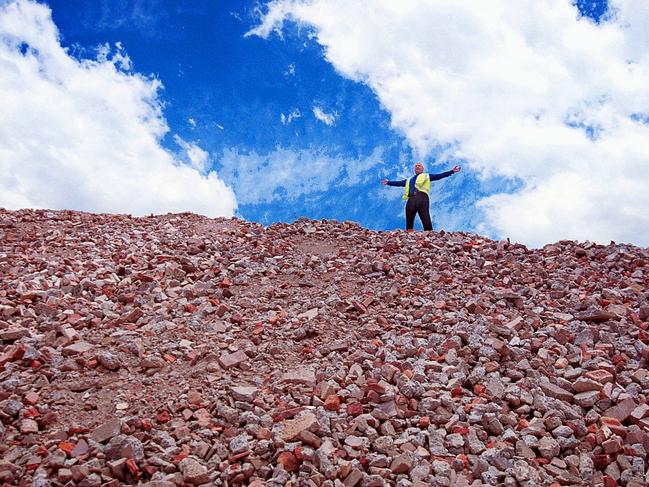
But there are also things that shouldn’t be there. A battered brown boot glides by as we speak. Faulkner says about 80 per cent of the stuff in the yellow-topped bins is genuinely recyclable.
“We certainly see a lot of clothing, a lot of electronic waste. Those type of things are recyclable, just not in the yellow topped bins,” he says.
There are people who use the yellow bins as a second general rubbish outlet. Nappies are not uncommon. Which makes it unpleasant for the poor folk on the sorting line. Occasionally, there are even stranger items.
“We saw an engine block at one stage, which I think takes a fair bit of good attitude to get in a recycling bin,” he says.
The simple point is that the better quality of material that goes into a bin, the more use it can be put to.
Faulkner and his team upgraded the plant last year and have since struck new deals that embrace the idea of the circular economy.
Paper is being sent to a pulp mill in New South Wales and is being sent back as newsprint, including for The Advertiser, while the plastic goes to a recycler and is returned as pipes which are bought by the three councils.
The problem of plastics, in particular, is enormous right around the globe.
Somewhere between Hawaii and California sits what is known as the Great Pacific Garbage Patch. It is an area approximately the same size as Queensland, and contains about 1.8 trillion pieces of plastic, weighing 78,000 tonnes. Most of it comes from Asia, with the 2011 Japanese tsunami believed to be responsible for about 20 per cent of the mass.
In a paper published last year in the scientific journal Science Advances, Roland Geyer, an associate professor at the California-based Bren School of Environmental Science and Management, calculated that as of 2015, 6300 million tonnes of plastic had been created globally. And around half of it had been manufactured since the start of this century. Of this, 9 per cent had been recycled, 12 per cent had been incinerated and 79 per cent was either in landfill or in the natural environment.
Widespread use of plastics did not become common until after World War II and has accelerated at a frantic rate ever since. Made primarily from oil, the vast majority of plastic is not biodegradable, although exposure to sunshine will see it break down into smaller bits. Plastic microfibres, less than 1mm in length, which primarily come off clothes when washed, have become so prevalent that they have been found in fish caught in Arctic waters.
“Plastic waste is now so ubiquitous in the environment that it has been suggested as a geological indicator of the proposed Anthropocene era (which is the current geological age),” Geyer wrote.
“Humans are conducting a singular, uncontrolled experiment on a global scale, in which billions of metric tons of material will accumulate across all major terrestrial and aquatic ecosystems on the planet.”
The question is what we do next? Or is it too late? At the University of South Australia, Robert Crocker teaches sustainability and the history of design. He has written a book called Somebody Else’s Problem: Consumerism, Sustainability & Design.
“The problem is that we are producing more and more for more people, faster, and we are getting rid of things faster,” he says.
Crocker describes the problem as standing under a balcony while “someone just keeps pushing things off”.
“The crap we put in the bin every day builds up. It doesn’t go away. It ends up somewhere,” he says.
More than 700,000 tonnes of waste is picked up from South Australian kerbsides each year. Almost half is classified as “residual waste”, 190,000 tonnes is in organic green bins and 143,000 tonnes is recycled.
Despite this, Crocker is an optimist but only if we change the way we are doing things. And progress is being made. In 2016-17, 873,000 tonnes of rubbish was sent to landfill. In 2003-04, the number was 1.3 million tonnes.
Crocker says key changes must be made urgently. There needs to be mandatory, simple labelling of plastics so consumers know what they are dealing with, and whether it can be recycled.
“We have spent 30 years telling the consumer you should do this and you shouldn’t do that, but really how are you going to make those decisions if you are not a chemist?” he asks.
“You are just doing your job and going shopping — how can you tell the difference between the different plastics?”
Like others, he also believes there needs to be some cost added to the manufacture and use of plastics which reflects their potential to damage the environment.
“If you are going to make a plastic that is toxic to all kinds of animals later, there should be a tax embedded in that so that the cleaning up of it and the dealing with it becomes something you are contributing towards paying for.”
Then there is the need to improve the way we all recycle. This can be through improved technology, better sorting and different attitudes from mass users of plastics such as supermarkets. He cites innovations by countries such as Sweden where you can take your plastic containers to the supermarket where you bought it for a refund as a good example.
Helen Millicer says too much has been left to local and state governments and the Federal Government “needs to get far more involved”. She says an April announcement by Environment Minister Josh Frydenberg that by 2025, all Australian packaging will be compostable or recyclable, is a “step in the right direction” but more detail was needed.
“If I was to compare Australian clarity and direction of Australian policies in comparison to ones in Europe, it is largely missing,” she says. “It’s got to take a far stronger stand and articulate a position. In Europe, it is widely understood the circular economy is a stronger economy and we have completely missed the ball on that front in Australia.”
As a first step, Millicer says the Federal Government should commission research to produce a national strategy that will allow the transition to the circular economy.
“With good data and analysis of what is being done overseas, and figure out what is appropriate for Australia, they would be able to formulate strategy that will inform a far more robust economy and help with preservation of quality material and precious resources,” she says.
Millicer says it’s vital to engage with manufacturing industries and industry associations to take it away from being solely an environmental issue.
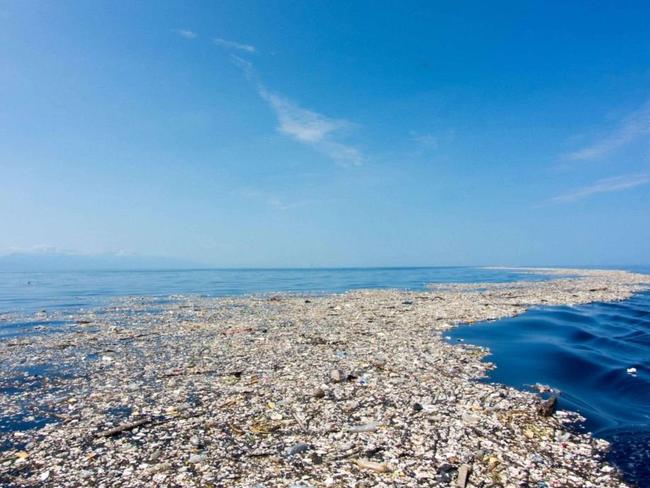
John Phillips of KESAB is something of an icon in the world of recycling in South Australia. He joined the Keep South Australia Beautiful anti-littering organisation in the late 1980s and today, as well as continuing to push the message at home, travels the world selling the environmental message. This year he has had invitations from Thailand, Mongolia and the tiny Pacific island nation of Kiribati.
“And all I see is plastic, plastic, plastic and beverage containers everywhere,” he says.
And part of the problem when it comes to recycling is the different plastic involved in making a bottle. There is one type used in a bottle top lid, as compared to the bottle itself — and then there is the label.
He says manufacturers and retailers need to make it simpler for consumers to recycle. There is also an argument about broadening the scope of the state’s container deposit legislation. Or even increasing it from 10c.
“Would you bend over and pick 10c up?” is Phillips’ rhetorical question.
Container deposits were introduced in 1977 as an anti-littering device to limit the amount of cans and bottles entering the environment. But it has evolved from being purely about littering to a weapon for improving the quality of recycling. Perhaps it should include items such as wine bottles or even hard plastic containers like those used for laundry detergent.
Taking glass away from plastics, paper and cardboard would also lessen the possibility of contamination from breaking glass.
“That might seem far-fetched,” Phillips says. “But if you want to maximise recovery and you want to build socio-economic scale when it comes to small business and new business, you have to capture as much as you can.”’ But the need for education goes much further than reiterating what plastics and papers need to go in which coloured bin. There is also the question of food waste.
Up to 40 per cent of rubbish in the general waste bin is food.
“People still have a plastic bag,” Phillips says. “Under the sink they have a plastic bag, put the food scraps in and straight into the bin. There is potential for those food scraps to go into the green organic bin.”
And not just discarded food. Bones from chops and T-bone steaks can also go in the green bin. As can dog and cat poo. But don’t wrap them up in plastic bags. That just contaminates everything else and causes a whole other set of problems.
Phillips is also keen to clear up another food-related myth. Yes, it is OK to put pizza boxes in the recycling bin. Just put the leftover pizza slices in the green bin first.
Talk to anyone in this world though and they all ask the same question. Have you talked to Vaughan yet? Vaughan being Vaughan Levitzke who is chief executive of Green Industries SA, which used to be known as Zero Waste SA.
Like Phillips, Levitzke is in demand around the world and has even addressed the United Nations. He says China’s decision has caused enormous global disruption but the solution for South Australia lies in a three-pronged approach. First, clean up the recycling material stream. Second, diversify into other markets. Three, invest in new infrastructure.
He welcomed the $12.4 million State Government package announced in April, with almost half of it in grants for local councils and industry to build infrastructure to help cope with the new world of waste.
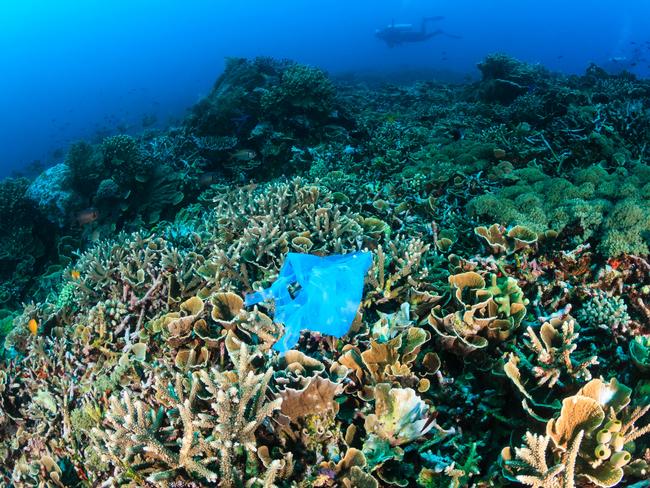
Levitzke says there are around 120 SA businesses involved in waste in one way or another and he namechecks companies such as soil and compost companies Jeffries, a firm where Premier Steven Marshall worked, and Peats, as examples of what can be achieved. He says new markets may emerge now that China is gone, and that Australian paper mills can take more, even if it is at a lower price.
Levitzke would like to see more “remanufacturing’’ closer to the source in South Australia and is urging greater investment in technology.
“There are a lot of really good economics in South Australia of circular economy activities going on but it’s not entrenched, it’s not part of the normal way of doing business yet.”
That “yet” suggests that South Australia is at least facing in the right direction to meet this new world head-on. But, Levitzke says there is no time to spare because “no one can keep their recycling at home for the next six months while we sort this out”.
“There is so much talk about it,” Levitzke says. “But now we actually have to start doing stuff — and we have to do it quickly, and we have to do it smart, and we have to make sure that it lasts.”
RULES FOR RECYCLING IN YELLOW-TOPPED BIN
● Do clean and dry containers before recycling (glass, plastic, metal)
● No soft plastics such as those used to wrap newspapers
● No textiles
● Place recyclables loosely into the recycle bin — not contained in a shopping bag
● Take e-waste to a special collection depot
● No expanded polystyrene foam
● No batteries
● No lightbulbs
However, some of these items can be recycled in other ways. To check go to recycleright.sa.gov.au
